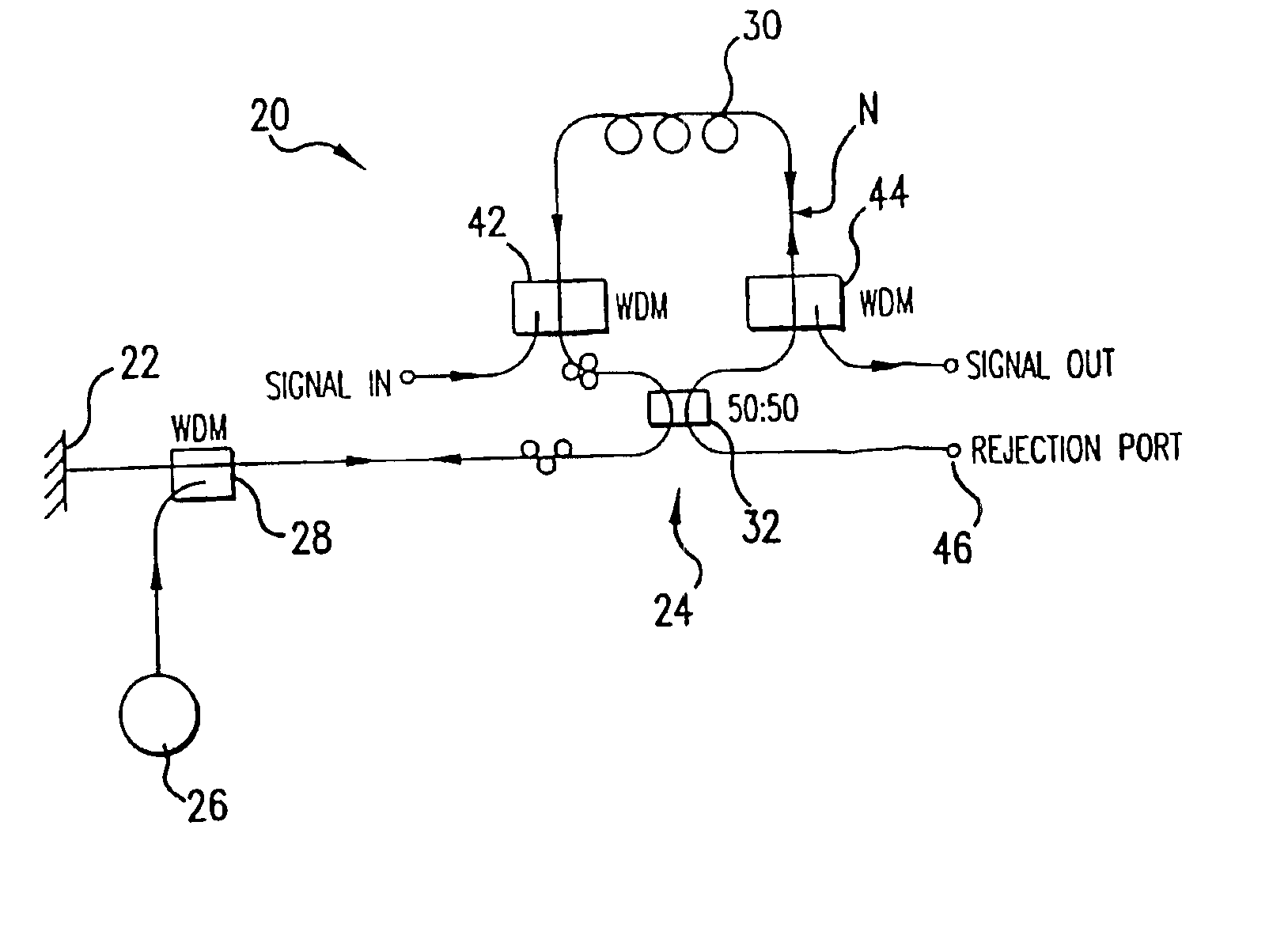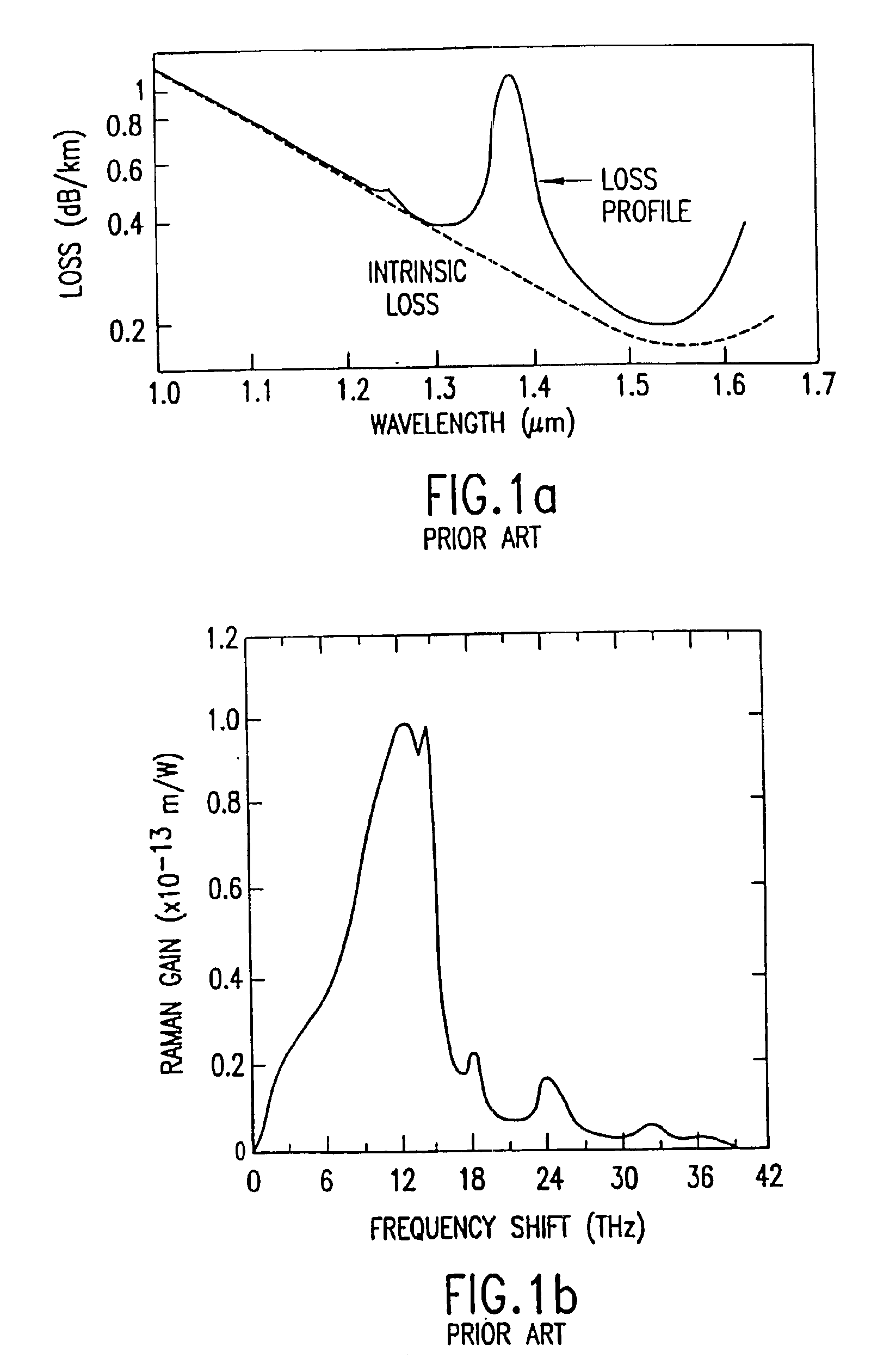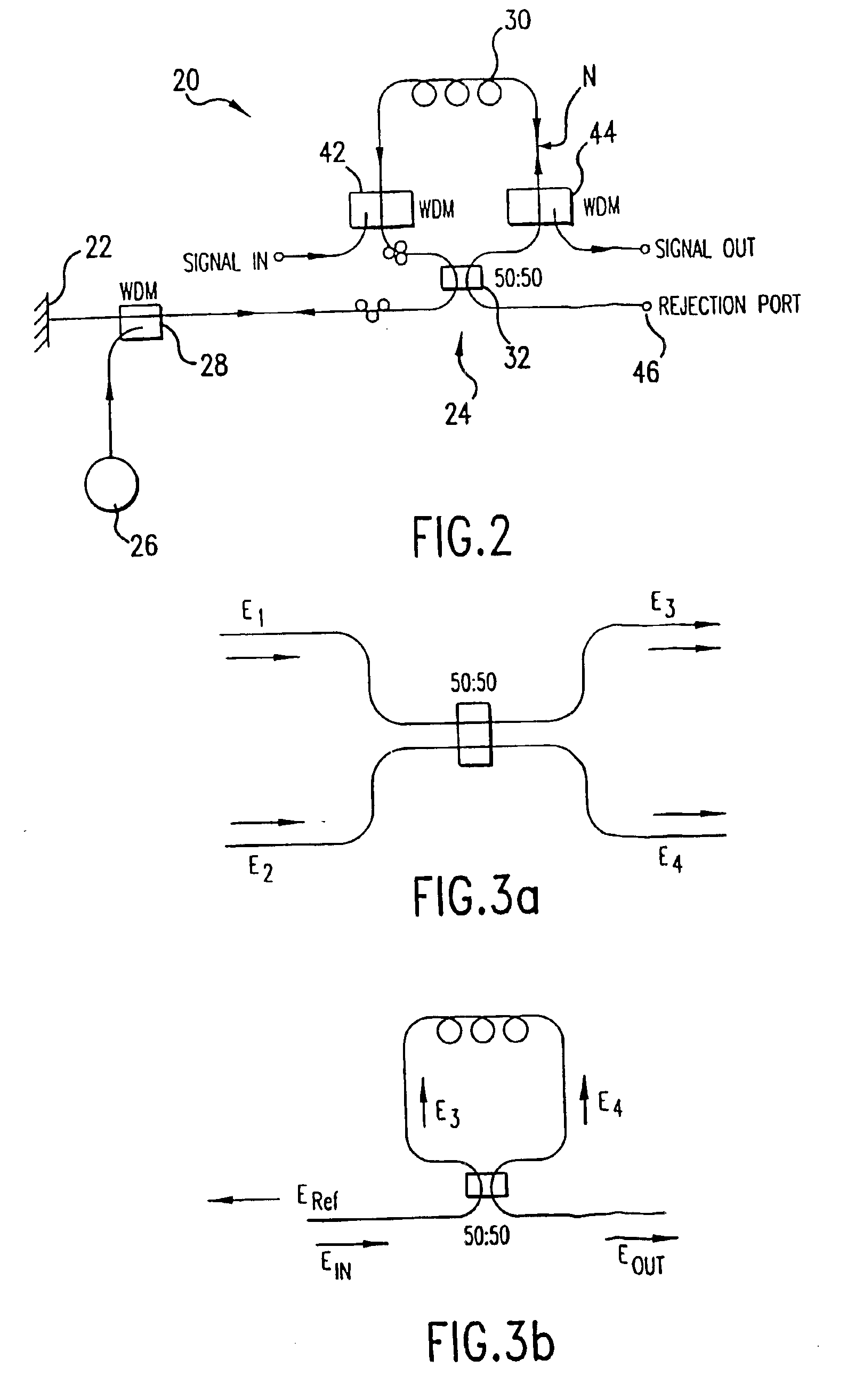Multiple wavelength pumping of raman amplifier stages
a technology of amplifier stage and amplifier stage, which is applied in the field of broadband sagnac raman amplifier and laser, can solve the problems of not being cost-effective without optical amplifiers, major difficulties in upgrading to the higher bandwidth edfa technology, and not being able to permit further upgrading based on wavelength-division multiplication, so as to improve noise performance and protect against double rayleigh scattering
- Summary
- Abstract
- Description
- Claims
- Application Information
AI Technical Summary
Benefits of technology
Problems solved by technology
Method used
Image
Examples
first embodiment
[0070]FIG. 2 illustrates the Sagnac Raman amplifier 20 that comprises at least two reflectors 22, 24 and a port 28 for coupling to a source of light. Specifically, reflector 22 may be any reflective structure such as a mirror. Reflector 24 is a loop reflector such as a Sagnac interferometer. In this embodiment, these two reflectors form there between an optical resonator. The light source 26 is a pumped fiber laser coupled through a WDM port 28 to the optical resonator. An optical signal is injected into the optical resonator and this signal is then amplified by the optical energy introduced by the light source 26. An optical signal input WDM port 42 is provided to allow the optical resonator to be used as an optical amplifier. The optical signal then exits from an optical signal output WDM port 44.
[0071]The light source 26 can be any suitable source of optical energy. Because the Raman effect relies upon intense optical energy, high power semiconductor or cladding-pumped fiber lase...
second embodiment
[0088]FIG. 4 shows the invention. A resonant cavity is formed between reflector 22 and reflector 24. Reflector 24 is a Sagnac interferometer including a dichroic coupler 32b and a fiber loop. Dichroic coupler 32b is used to provide frequency selectivity. The dichroic coupler provides nominally 50:50 coupling over the cascade Raman order wavelengths, but a ratio that is closer to 100:0 for the signal wavelength. Thus, for a 1.3 μm system the 50:50 coupling would be provided for wavelengths less than 1300 nm and the 100:0 coupling would be provided for wavelengths greater than 1300 nm. The advantage of this configuration is that it is easier to make a balanced Sagnac interferometer, and the fiber in the Sagnac interferometer may be packaged more simply. One possible disadvantage of this configuration is that the dichroic coupler may be more difficult or expensive to implement. The signal input WDM port 42b is positioned in the cavity at a location between the two reflectors 22 and 24 ...
third embodiment
[0089]FIG. 5 illustrates the invention in which reflector 22 of FIG. 2 has been replaced by a series of grating reflectors 50 and 52. The grating filters may be selected to provide 100 percent reflection at selected wavelengths, such as at 1175 nm and 1240 nm. The advantage of the configuration of FIG. 5 is that a narrow pump line width can be achieved. The disadvantage is that the configuration is more complicated and more expensive to fabricate.
PUM
 Login to View More
Login to View More Abstract
Description
Claims
Application Information
 Login to View More
Login to View More - R&D
- Intellectual Property
- Life Sciences
- Materials
- Tech Scout
- Unparalleled Data Quality
- Higher Quality Content
- 60% Fewer Hallucinations
Browse by: Latest US Patents, China's latest patents, Technical Efficacy Thesaurus, Application Domain, Technology Topic, Popular Technical Reports.
© 2025 PatSnap. All rights reserved.Legal|Privacy policy|Modern Slavery Act Transparency Statement|Sitemap|About US| Contact US: help@patsnap.com



